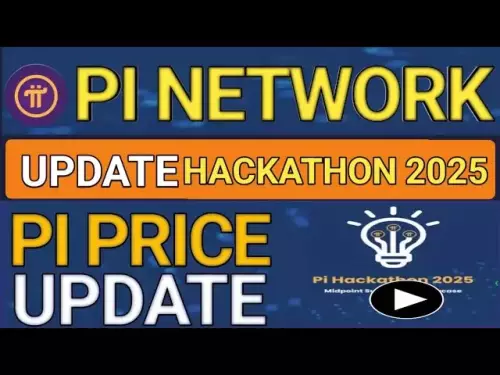 |
|
 |
|
 |
|
 |
|
 |
|
 |
|
 |
|
 |
|
 |
|
 |
|
 |
|
 |
|
 |
|
 |
|
 |
|
Looking back to the spring of 2024, the Bitcoin ecosystem was like a dazzling supernova.

Author: Luke, Mars Finance
From peak to trough: a year of extremes in the Bitcoin ecosystem
Looking back to the spring of 2024, the scene of the Bitcoin ecosystem was like a dazzling supernova. The rise of the BRC-20 token standard, relying on the inscription craze of the Ordinals protocol, ignited the market's enthusiasm. Inscriptions - the innovation of embedding unique data directly into Bitcoin's smallest unit, the "satoshi" - made on-chain activities take off like a rocket. The prices of tokens such as ORDI skyrocketed, and some assets doubled or even multiplied their market value in just a few weeks. Projects such as SATS and RATS also joined the carnival, bringing astonishing returns. Bitcoin on-chain transaction volume surged, gas fees soared, and miners' income rose. This is a golden moment, where innovation, speculation and enthusiasm intertwined, as if heralding a new era for Bitcoin - not only as digital gold, but also a vibrant decentralized finance (DeFi) platform.
However, the craze in the crypto world is often short-lived. By mid-2024, the narrative of the Bitcoin ecosystem has fallen from heaven to the bottom. The prices of those tokens that once soared - ORDI, SATS, etc. - plummeted, retracing more than 95% from their highs. On-chain activity has shrunk sharply, inscription transaction volume has continued to decline, and the pace of new project releases has slowed to a near standstill. Community sentiment has turned from high to low, the long-awaited airdrop has been disappointing, and the Runes protocol - the highly anticipated evolution of BRC-20 - has cooled rapidly after a brief craze. By early 2025, the Bitcoin ecosystem is no longer the darling of the market, but has become a "reverse indicator" of sector rotation, symbolizing unrealized potential and investor fatigue.
At this time of depression, the Bitcoin ecosystem suddenly rejuvenated in the past week. ORDI soared nearly 97% in six days, PUPS became the vanguard of the rebound with a 127% increase, and SATS almost doubled from its low point this year, up 87%. Tokens such as NALS, BANK, and BounceBit (BB) rose between 40% and 80% per week, and mainstream assets such as BRC-20 and Runes collectively ushered in a recovery. The inflow of funds on the chain has increased significantly, and the market's attention has once again focused on this long-dormant field. Is this a short-lived flash of light, or the starting point of a greater recovery? To answer this question, we need to analyze the driving force of the rebound, the structural dilemma of the ecosystem, and the conditions required for a lasting revival.
The logic of the rebound: sentiment repair and capital rotation
Market Style Switch: The Forsaken Strikes Back
The crypto market has always been known for its cyclicality. This rebound in the Bitcoin ecosystem perfectly fits the classic logic of "low-expectation reversal". After a year of continuous selling, the valuations of most tokens in the ecosystem have been compressed to the extreme. Head assets such as ORDI and SATS have fallen more than 90% from their highs and are regarded by the market as abandoned children with "no trading logic". However, it is in this mood of despair that the spark of rebound often ignites quietly.
The trigger for this wave of market movement came largely from the switching of market styles. Ethereum previously rebounded 50% amid huge doubts from the community, proving the explosive power of undervalued assets when sentiment reverses. This phenomenon encourages funds to flow to sectors with lower valuations and more adequate corrections, and the Bitcoin ecosystem, which has been neglected by the market for a long time, has become a natural rotation target. Since these tokens have low liquidity and historically low valuations, a small amount of buying can trigger drastic price fluctuations, creating amazing short-term elasticity.
Speculative carnival: the charm of marginal assets
Another driver of the rebound is the inherent speculative nature of the crypto market. Compared with the steady trend of blue-chip assets such as Bitcoin and Ethereum, niche tokens such as PUPS and BSSB attract short-term funds with high volatility. These projects often rely on niche protocols or meme narratives, lack solid fundamentals, but become a paradise for speculators due to their high-risk and high-return characteristics. PUPS's recent 127% increase is an example: a little-known token quickly became the focus of capital chasing by igniting market sentiment. This phenomenon is not new in the crypto market, but it explains why the Bitcoin ecosystem - with a large number of low-market-cap tokens - can become a hot spot for speculation in a short period of time.
The recovery of on-chain data
On-chain data also adds evidence to the
Disclaimer:info@kdj.com
The information provided is not trading advice. kdj.com does not assume any responsibility for any investments made based on the information provided in this article. Cryptocurrencies are highly volatile and it is highly recommended that you invest with caution after thorough research!
If you believe that the content used on this website infringes your copyright, please contact us immediately (info@kdj.com) and we will delete it promptly.
























































